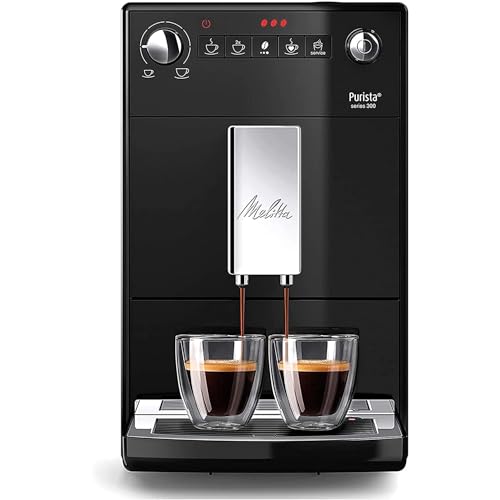Energy-Efficient Espresso Machines: A Comprehensive Guide
In the world of coffee lovers, espresso machines are frequently considered essential appliances for brewing abundant, fragrant coffee. However, the energy usage connected with these machines can result in increased utility bills and environmental issues. As consumers become more eco-conscious, energy-efficient espresso machines have actually become a popular choice. This post intends to check out the functions, advantages, and choices offered in energy-efficient espresso machines, helping coffee fans make notified options.
What Makes an Espresso Machine Energy-Efficient?
Energy-efficient espresso machines are created to reduce energy consumption while keeping optimal performance. A number of features add to the energy performance of these machines:
Insulation: High-quality insulation helps retain heat, reducing the energy needed to maintain ideal brewing temperatures.
Smart Technology: Many modern machines are equipped with programmable settings that permit users to set up developing times and switch to standby mode when not in use.
Quick Heat-up Time: Energy-efficient espresso machines frequently use innovative heating innovations, such as thermoblocks or PID controllers, to heat water quickly.
Low Wattage: Machines that run at lower wattages take in less energy overall, making them more effective.
Car Shut-off: Automatic shut-off features make sure that the machine shuts off after a specific duration of lack of exercise, additional decreasing energy waste.
Advantages of Energy-Efficient Espresso Machines
Purchasing an energy-efficient espresso machine can provide numerous advantages:
Cost Savings: Over time, lower energy intake can cause minimized electricity bills.
Ecological Impact: Using less energy lowers carbon footprints, making these machines a more sustainable option for ecologically mindful customers.
Enhanced Performance: Many energy-efficient designs likewise provide remarkable brewing innovations, leading to better-tasting espresso.
Resilience: Typically, energy-efficient machines are developed with high-quality elements, causing higher durability.
Features to Consider
When picking an energy-efficient espresso machine, a number of functions ought to be considered:
- Type of Machine: Options include manual, semi-automatic, and completely automatic models, each with differing degrees of user control and automation.
- Brew Quality: Look for machines that make use of high-quality developing systems to guarantee optimal taste extraction.
- Maintenance: Some machines have self-cleaning functions that can conserve energy and effort in upkeep.
- Capacity: Depending on individual or family size, machine capacity can affect energy intake, with larger machines often needing more power.
Popular Energy-Efficient Espresso Machines
The market uses a range of energy-efficient espresso machines catering to various requirements and choices. Below are some noteworthy designs:
| Brand | Model | Key Features | Energy Consumption |
|---|---|---|---|
| Breville | Barista Express | Integrated grinder, PID temperature level control, fast heat-up. | Low |
| DeLonghi | EC155 | Compact size, easy to use, durable develop. | Moderate |
| Rancilio | Silvia | Durable design, excellent temperature stability, and has a low ecological effect. | Moderate |
| Gaggia | Classic | Reliable manual operation, durable brass components, and effective steaming capability. | Low |
| Jura | E8 | Completely automatic, smart functions, and a removable brew group for simple cleansing. | Low |
Tips for Optimal Energy Efficiency
Aside from picking an energy-efficient design, customers can adopt a number of practices to optimize energy effectiveness:
- Preheat: If your machine has a pre-heating function, use it to guarantee that the ideal temperature level is reached rapidly before developing.
- Switch off After Use: Always turn off the machine after brewing or use machines with vehicle shut-off functions.
- Routine Maintenance: Keep the machine well-kept to guarantee it runs efficiently and efficiently.
FAQs About Energy-Efficient Espresso Machines
1. Are energy-efficient espresso machines more pricey?
While the preliminary investment may be higher for energy-efficient designs, the long-term savings on electricity costs can offset the preliminary expense. In addition, numerous energy-efficient machines featured advanced features that enhance the developing experience.
2. How do I know if an espresso machine is energy-efficient?
Try to find indications such as Energy Star certification, user reviews, and specifications relating to wattage and heat-up time. Machines with specific functions targeted at lowering energy intake are usually created for much better performance.
3. Can I use an energy-efficient espresso machine for other coffee designs?
Numerous energy-efficient espresso machines offer flexibility, enabling users to brew various coffee styles beyond espresso, such as lattes and coffees, by integrating steaming abilities.
4. Do energy-efficient designs sacrifice quality for performance?
Not always. Numerous energy-efficient espresso machines are geared up with high-quality developing technology that can boost taste extraction while reducing energy usage.

5. What maintenance is needed for energy-efficient espresso machines?
Regular maintenance includes cleaning the machine, descaling when required, and periodically inspecting seals and gaskets to ensure ideal performance and energy efficiency.
Energy-efficient espresso machines represent a Best coffee espresso machine mix of performance, cost savings, and ecological obligation. By thinking about different functions, advantages, and brands, consumers can select a design that matches their distinct preferences while contributing positively to the environment. As the pattern towards sustainable living grows, the appeal of energy-efficient devices, consisting of espresso machines, is most likely to continue its upward trajectory, offering coffee enthusiasts a guilt-free way to enjoy their everyday dosage of espresso.

